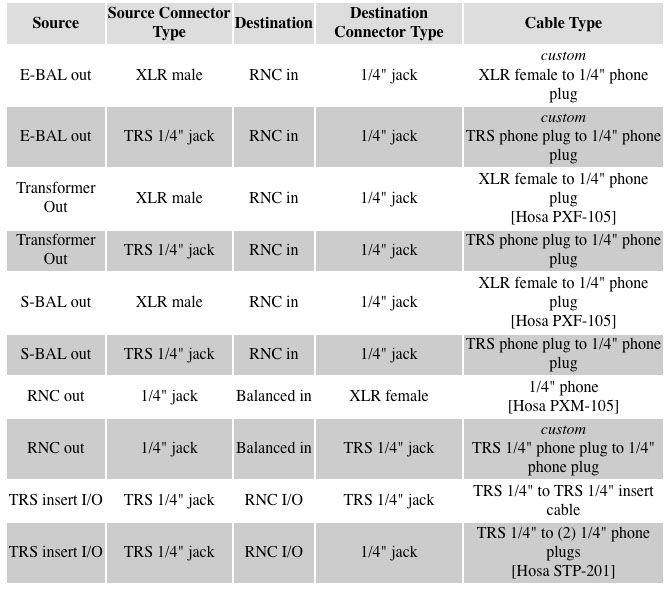AUDIO INTERFACE DETAILS
There are three types of output circuits in use today: transformer balanced, electronically-balanced (E-BAL) and electronically-balanced with servo (S-BAL). Here's a brief description of each:
Transformer Balanced
This output circuit uses a transformer to achieve very effective, high levels of isolation from ground. Of the three techniques, this is the most effective and least fraught with compromises (assuming a high-quality transformer and a good design implementation). It's also the most versatile to hook up. Without getting too "techie" about it, the transformer output is self-adjusting when going between a balanced connection and an unbalanced one. For example, when connecting a transformer-balanced output to a balanced input circuit, the voltage (i.e., the correct levels) is properly transferred to the input circuit via the "+" and "-" signals. When connecting the transformer-balanced output to an unbalanced input, however, we lose one of the wires (the "-" signal; there's only two wires in an unbalanced connection, "+" and ground). The loss of this signal would normally mean only receiving half of the signal voltage. The cool thing, though, is that the transformer automatically compensates for the lack of the third wire and delivers the correct voltage to the unbalanced input anyway! Most importantly, the transformer doesn't care, within practical bounds, whether there's a so-called ground connection or not! This is why you'll see the bigger studios (I mean big as in lots of square feet with lots of equipment scattered around) insist on transformer balancing.
Electronically Balanced (E-BAL)
This output circuit drives the "+" signal (HOT) of the balanced lines with a signal that matches the signal coming from the innards of the box, but that's usually at half the volume level. The "-" signal (COLD) has the same signal size on it, but with it's inverted: comparing the HOT with this COLD signal would show that where there's maximum positive peaks in the HOT signal there's maximum negative peaks in the COLD and vice-versa. When the receiving gear combines the HOT and COLD signals (each at half the original signal's amplitude), we recover the original signal. If we wish to hook up this E-BAL signal (HOT, COLD and ground) to an unbalanced input, we need to be careful that we don't hook up the COLD to the RNC's ground like we did with transformer balanced output. Why? Because we're driving the COLD signal with an amplifier and shorting it to ground may damage it. So how do we hook up such an output: we connect only the ground and HOT signals. This means that we lose half of the signal's volume, but this can be dealt with later down the signal path.
Electronically Servo-balanced (S-BAL)
This output type works similarly to the E-BAL, but has additional circuits to allow us to connect the COLD to the unbalanced inputs ground connection without: a) blowing up the output circuit and b) losing half the signal's volume. Pretty cool, huh?
Here's a table that summarizes all of the balanced and insert hook-up configurations for the RNC:

Entries with " custom " in the cable type column do not have the COLD and Ground connected together, but rather leave the COLD unconnected.
©2025 FMR Audio